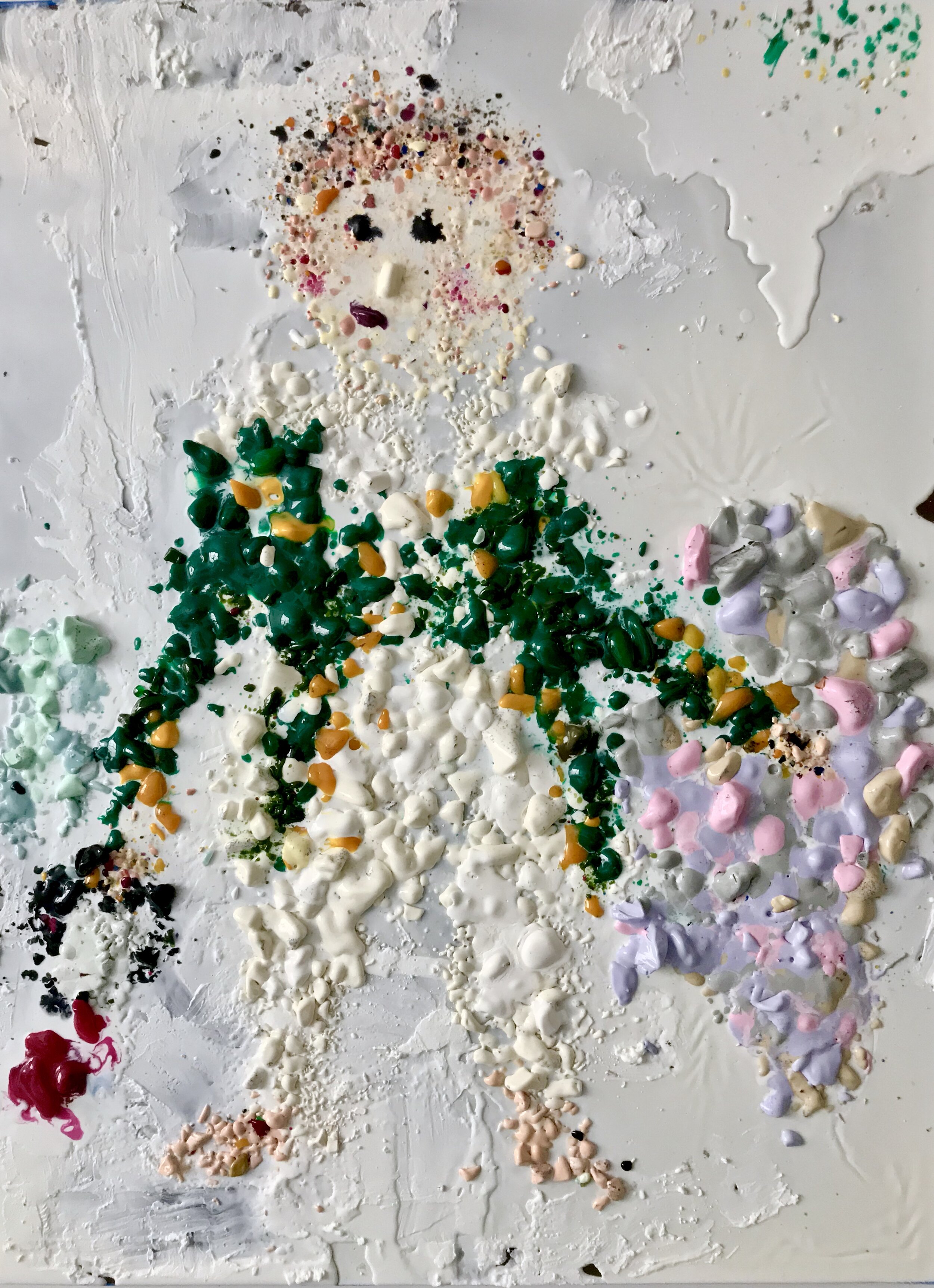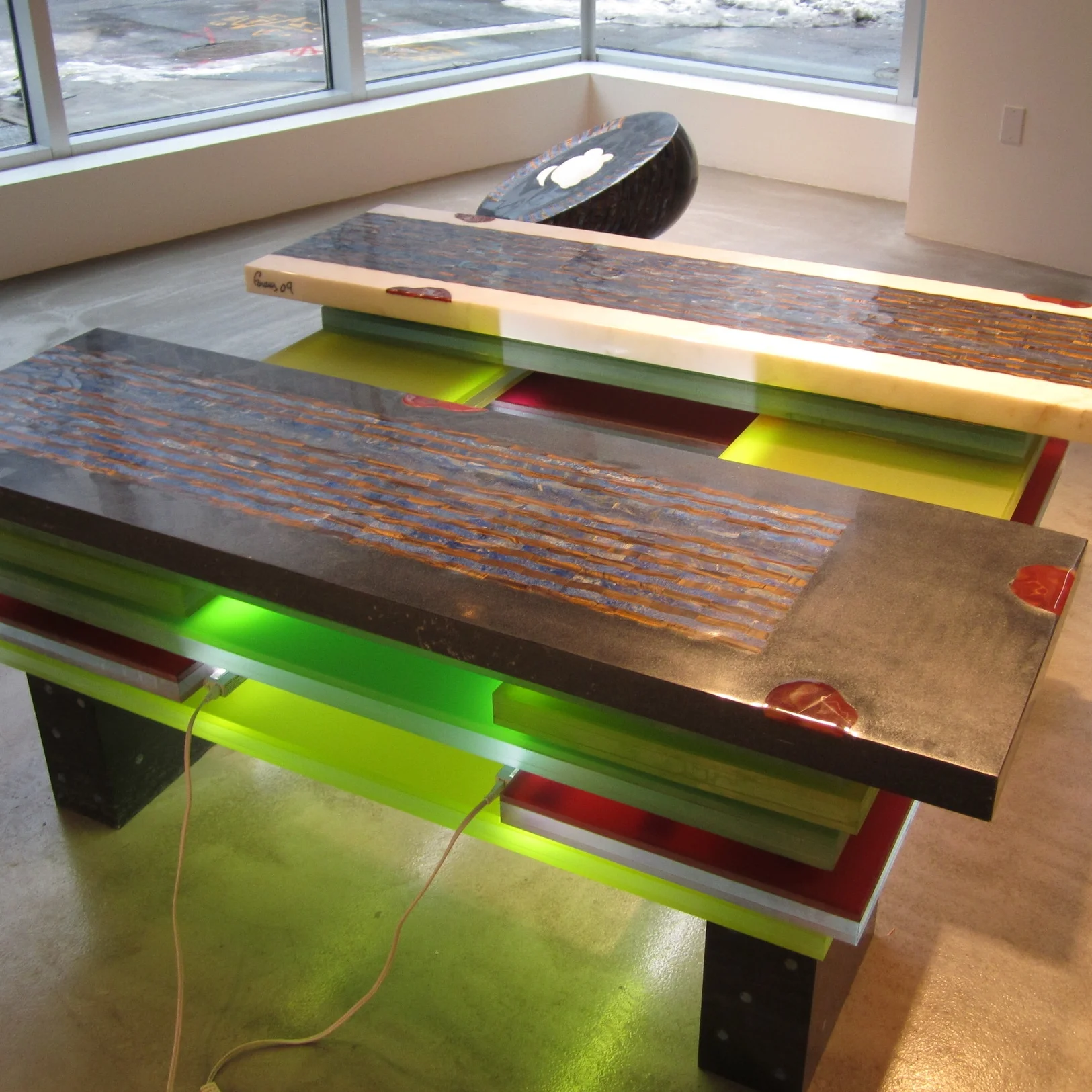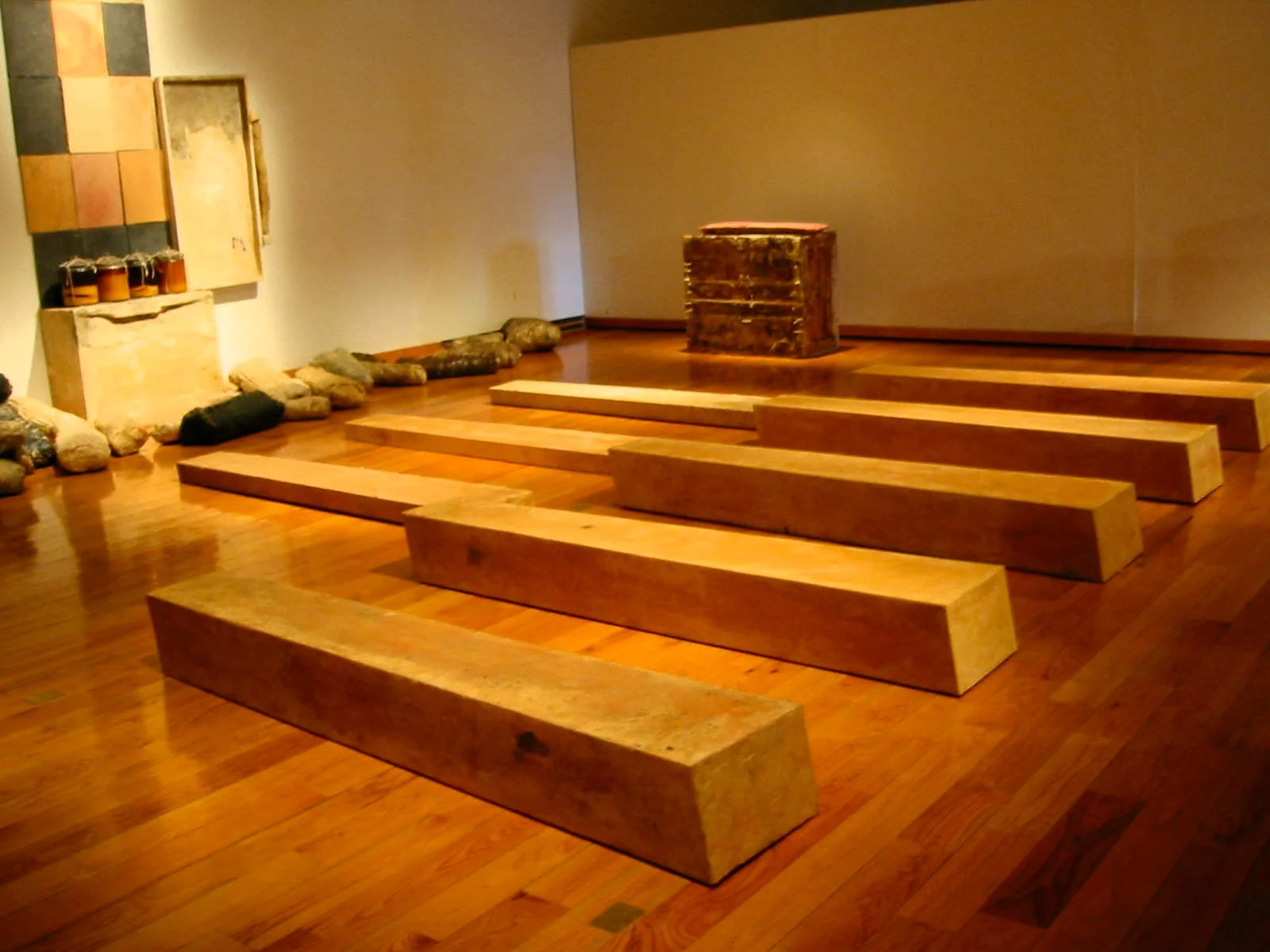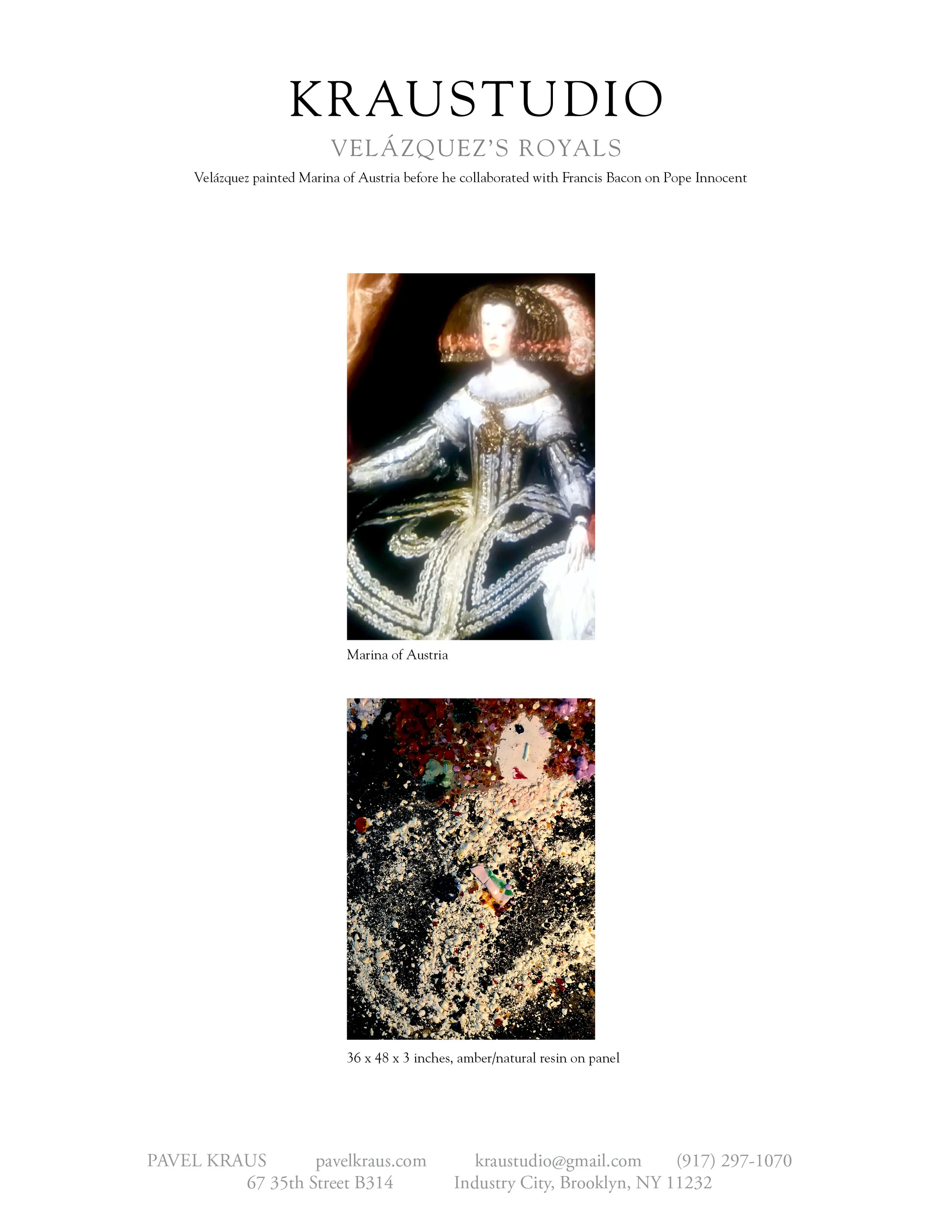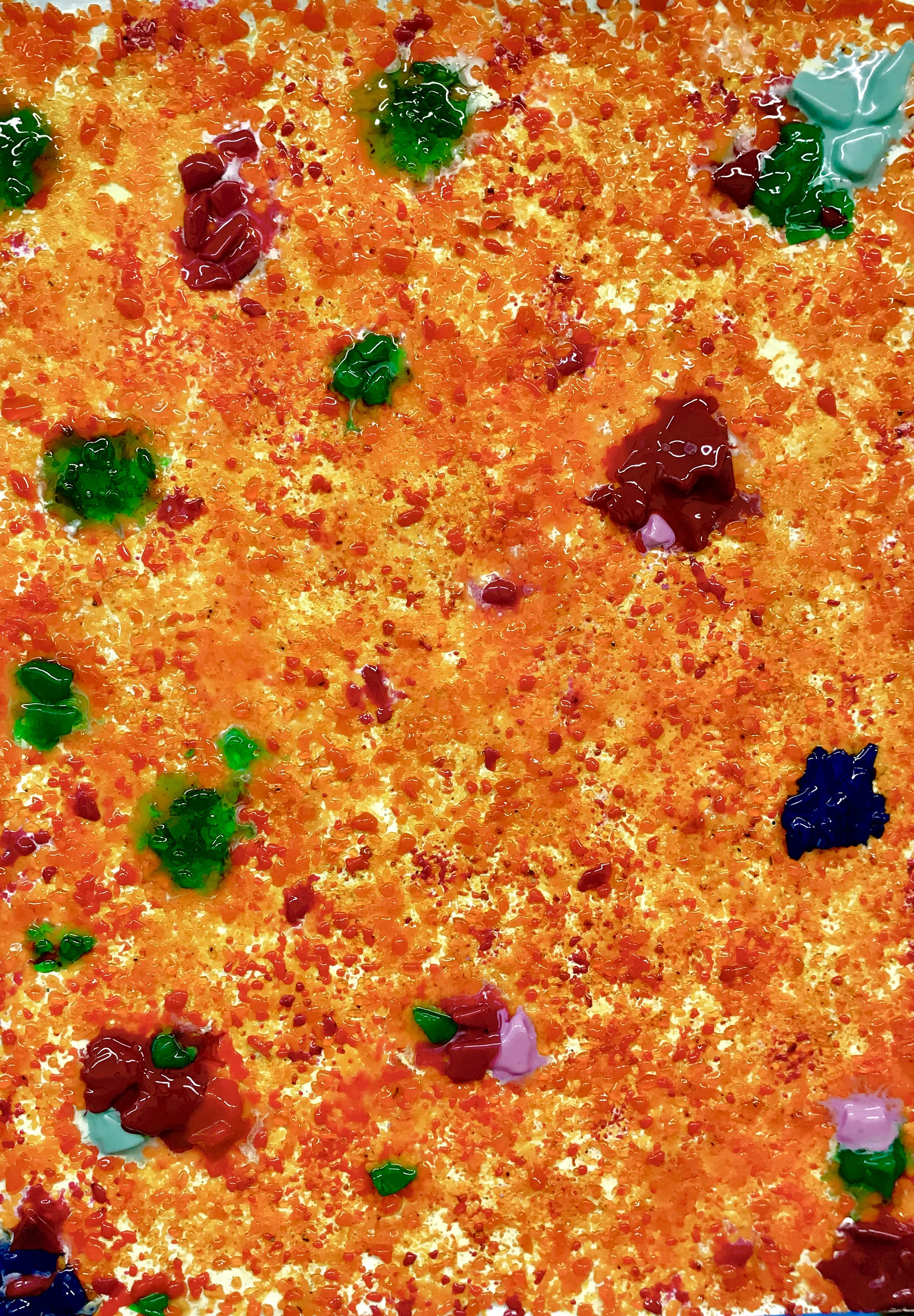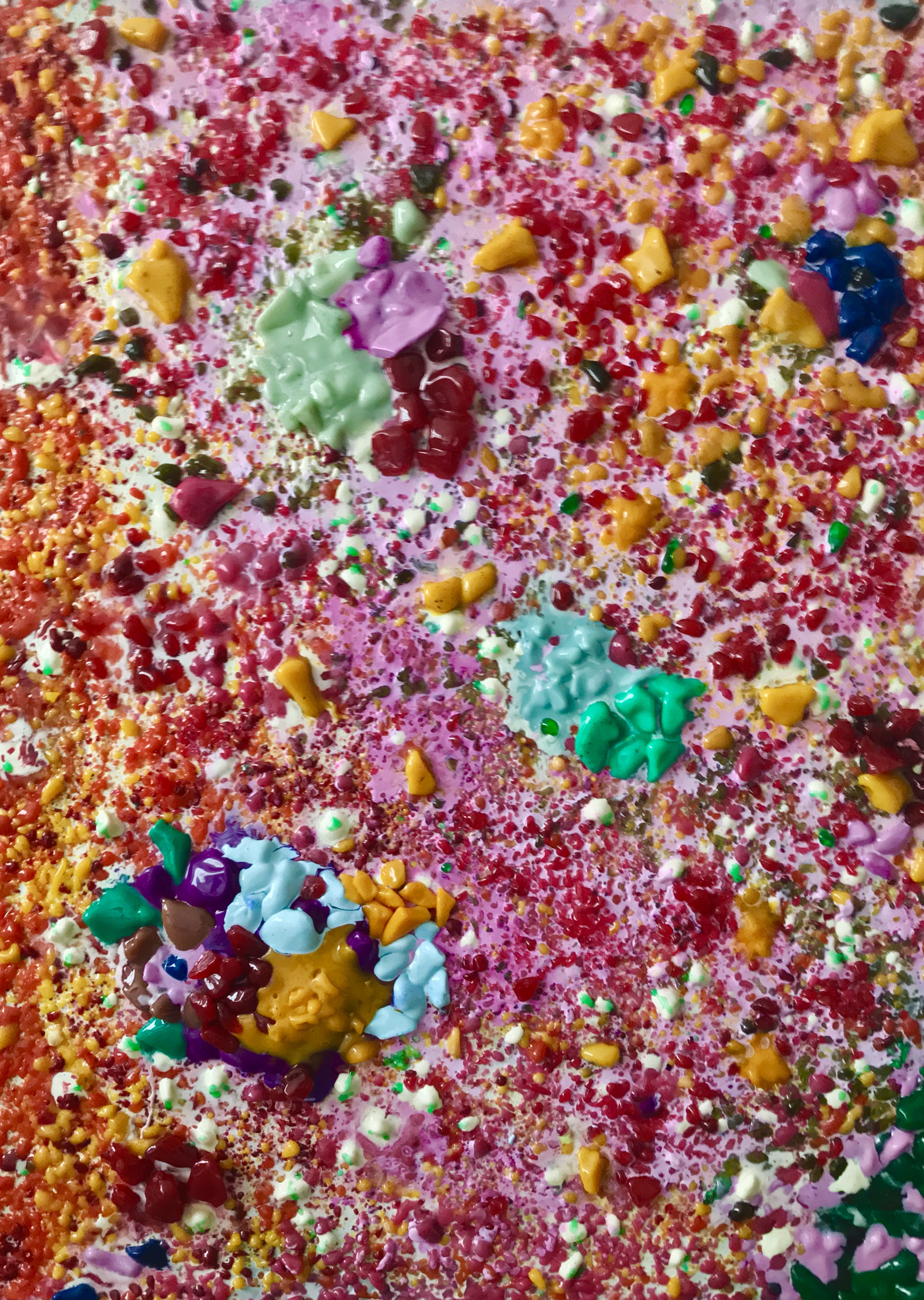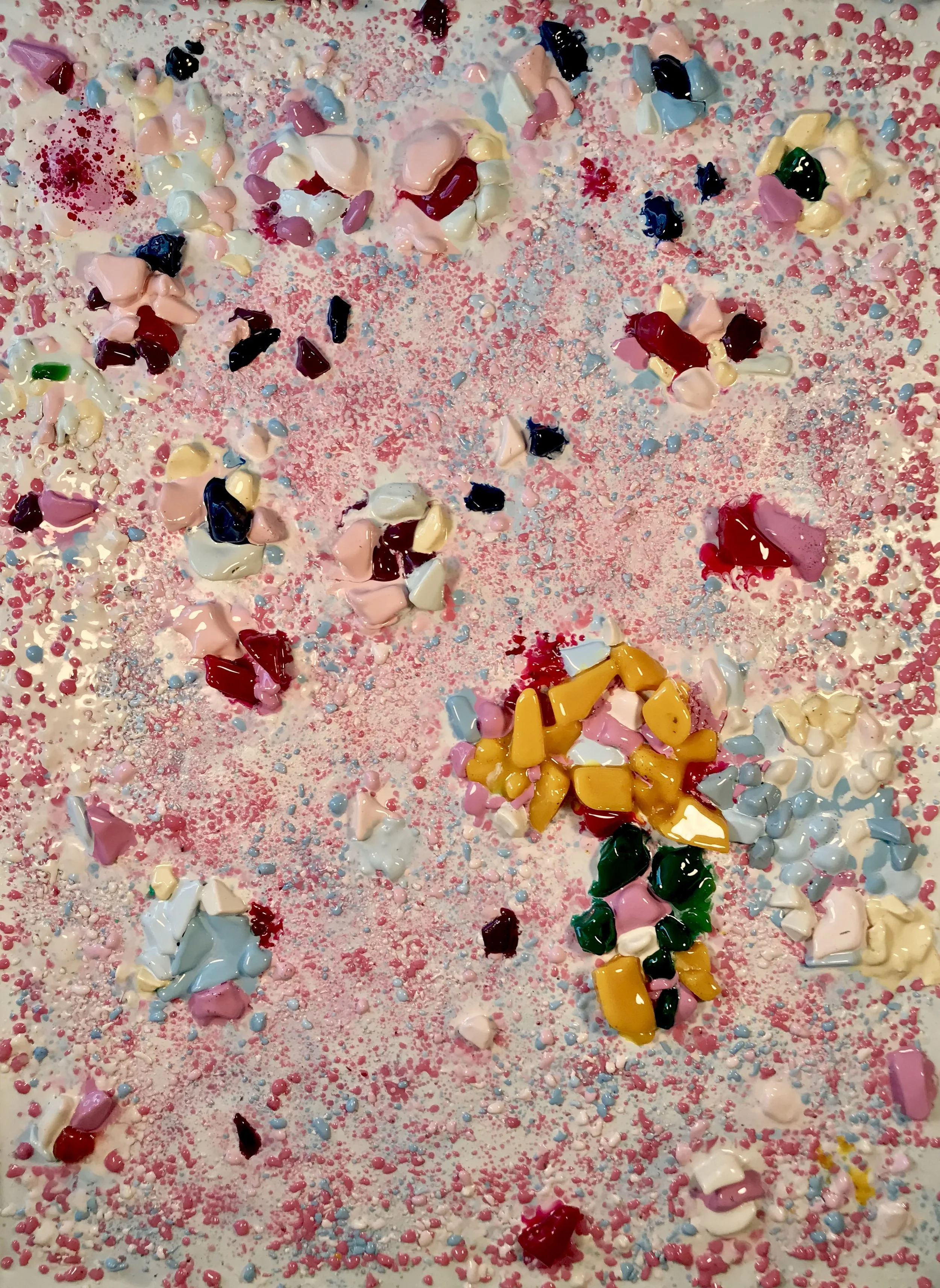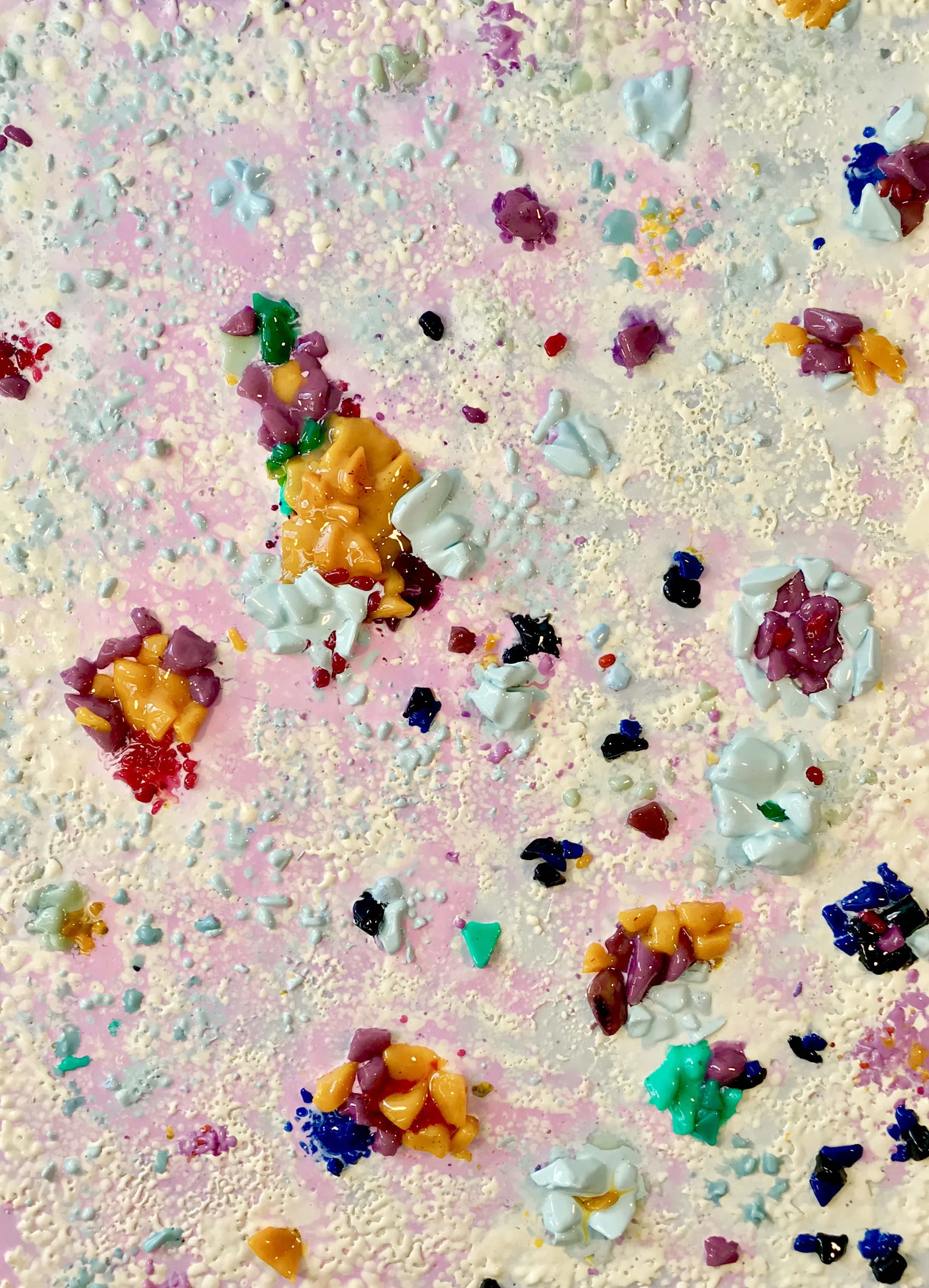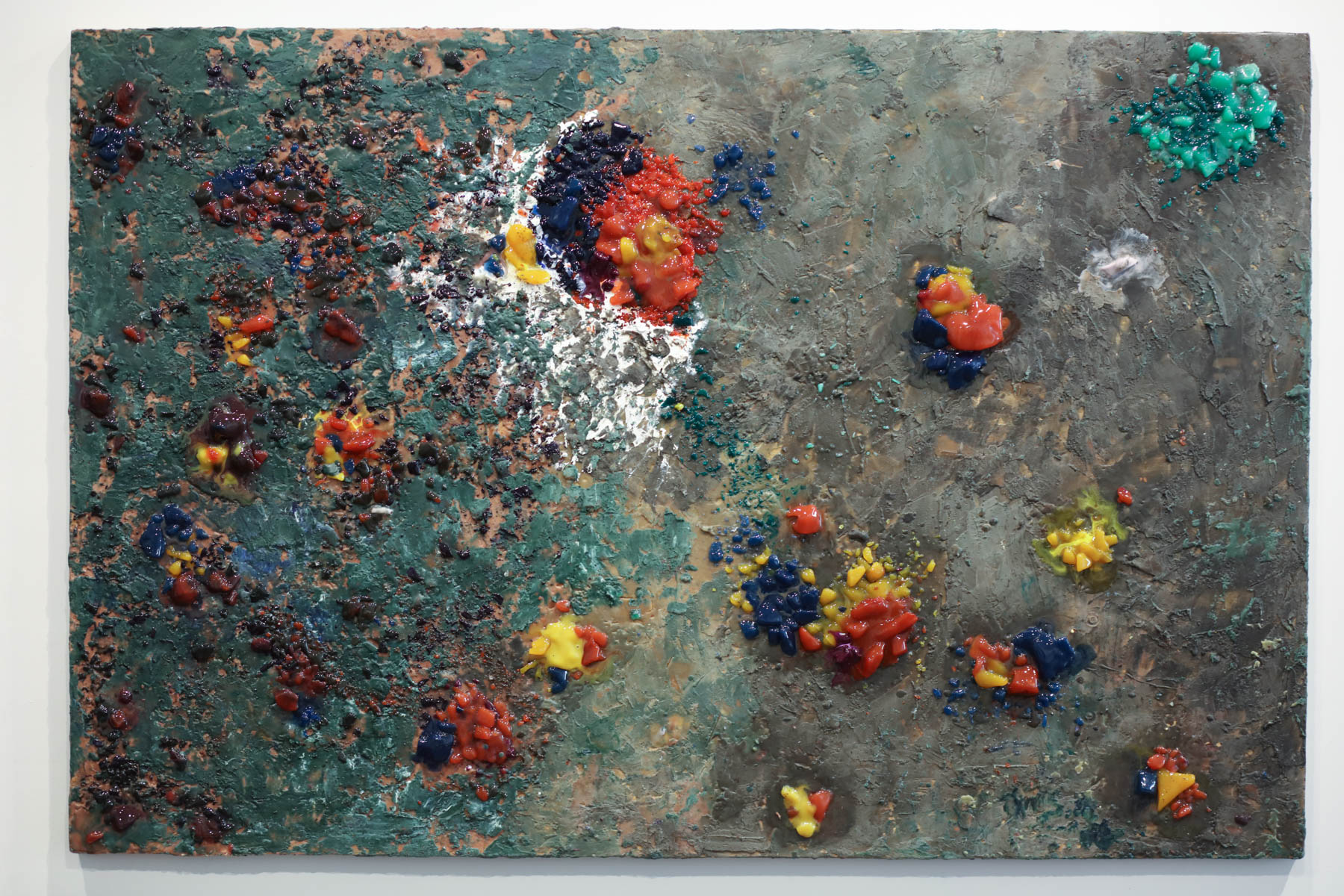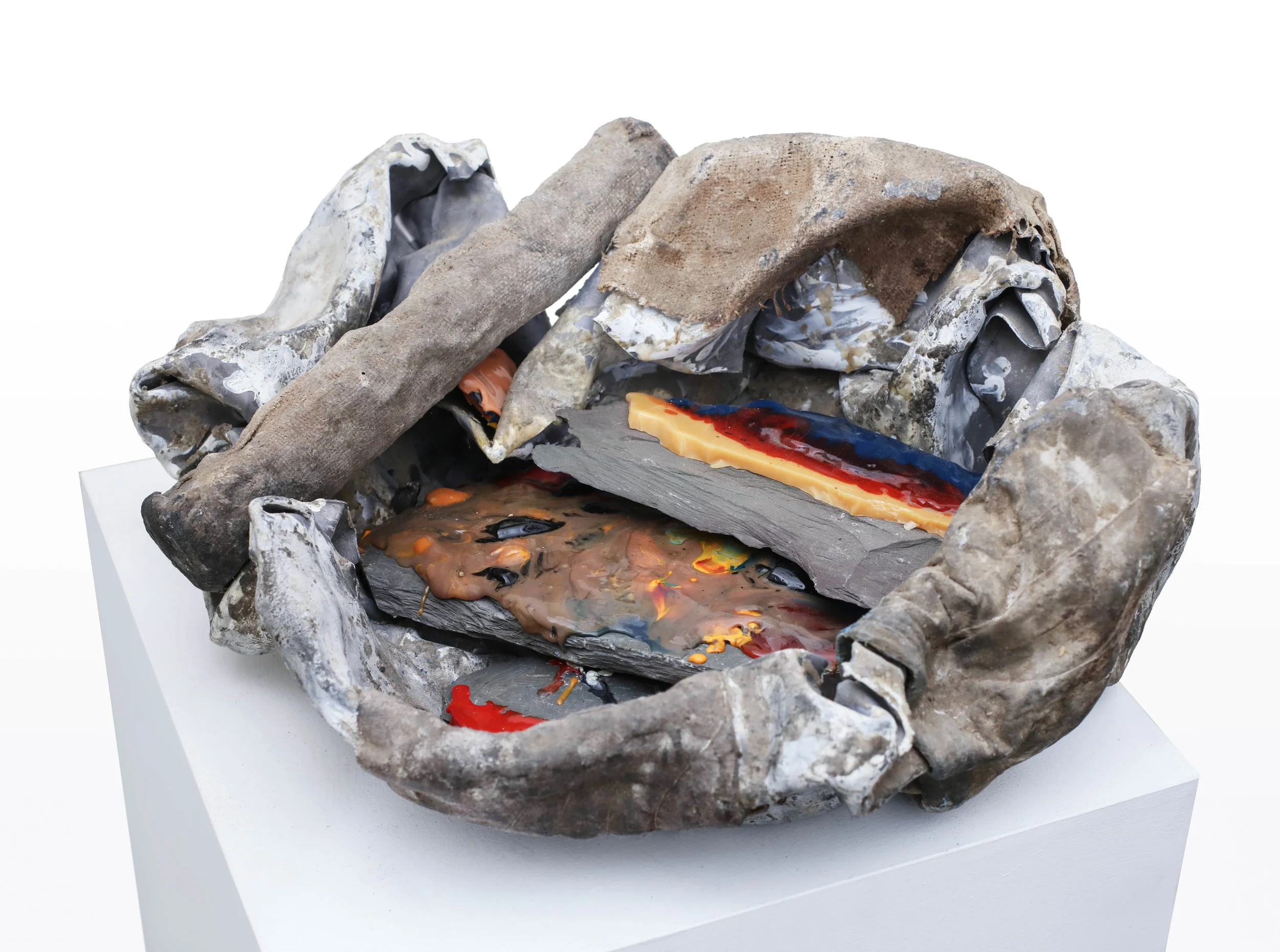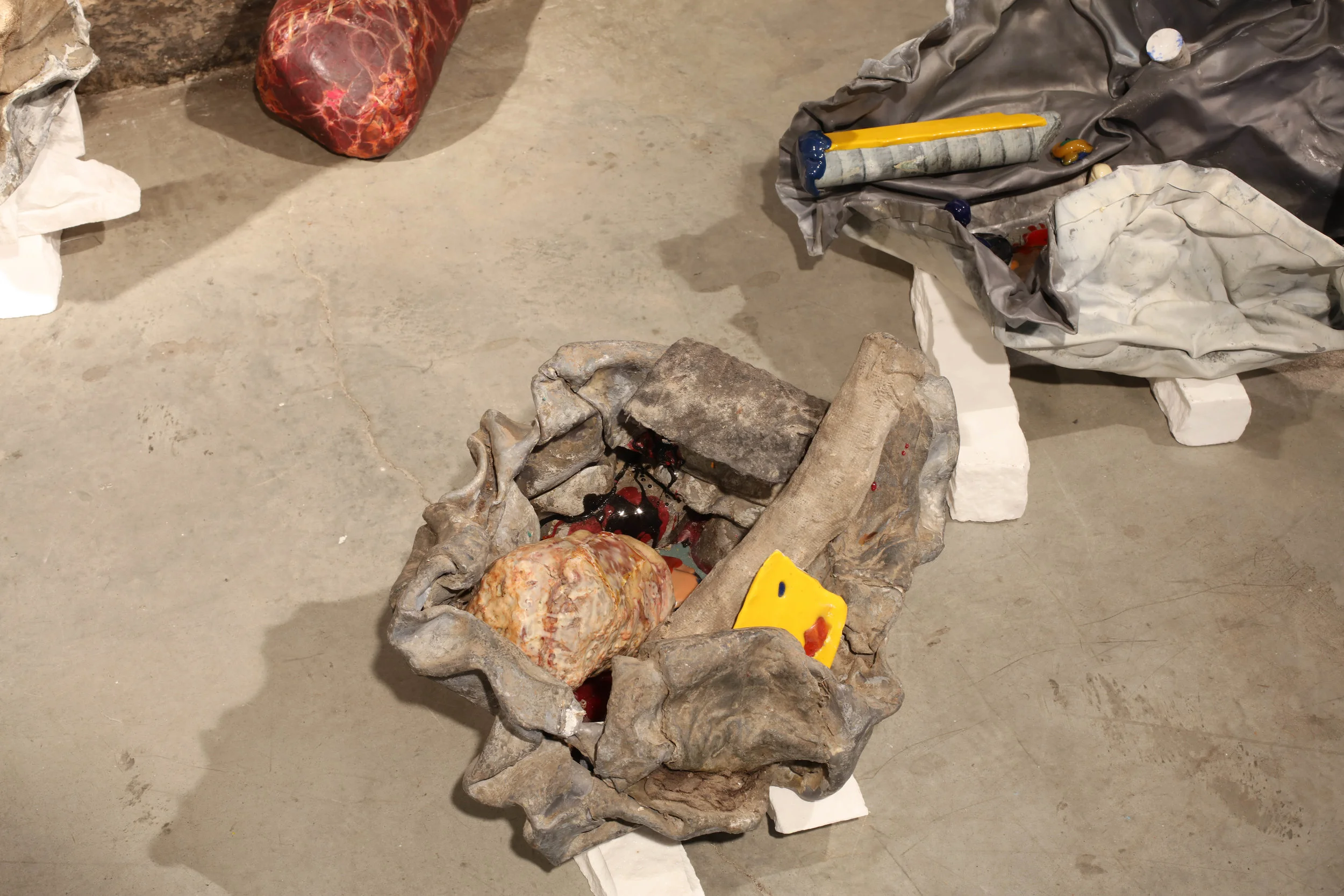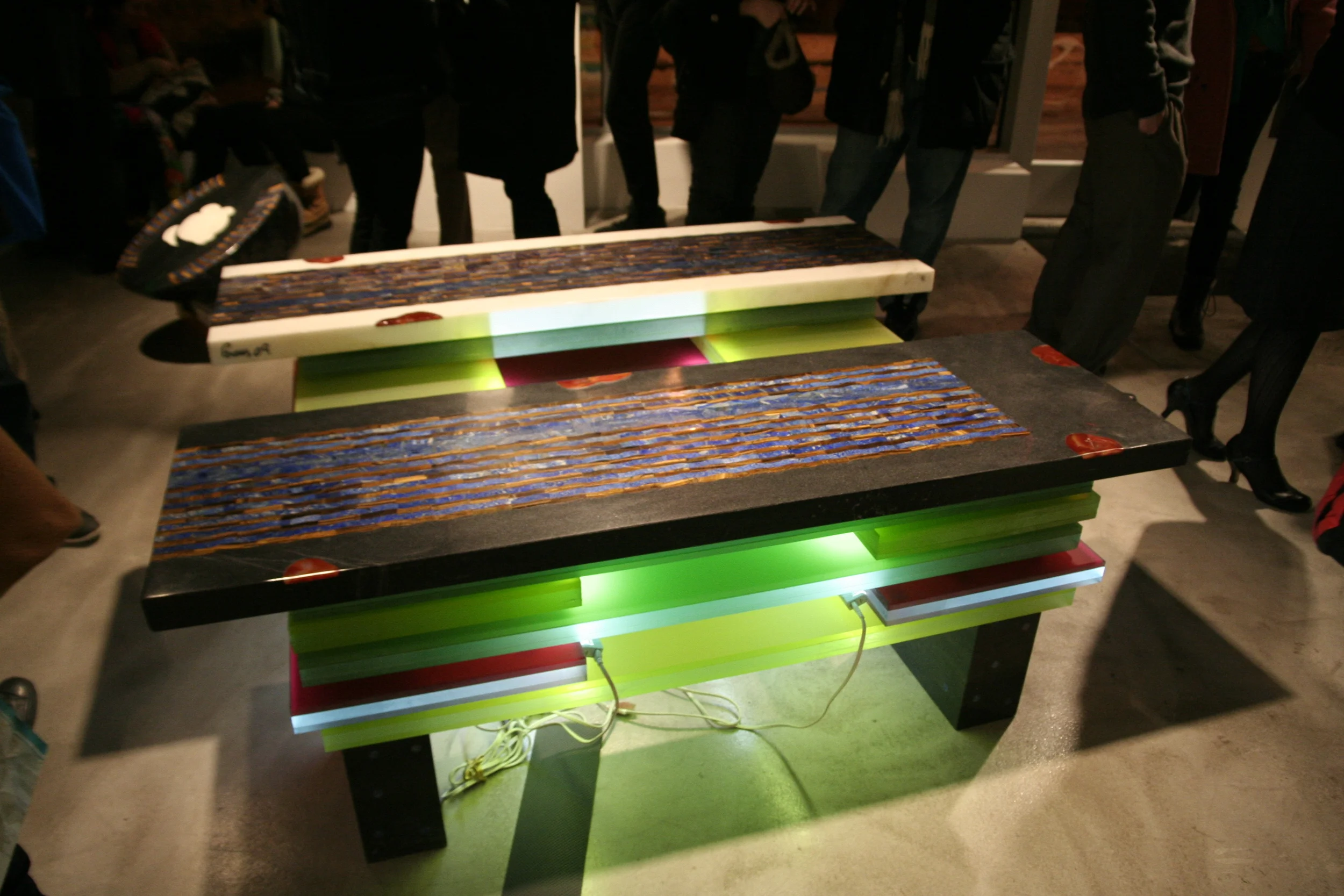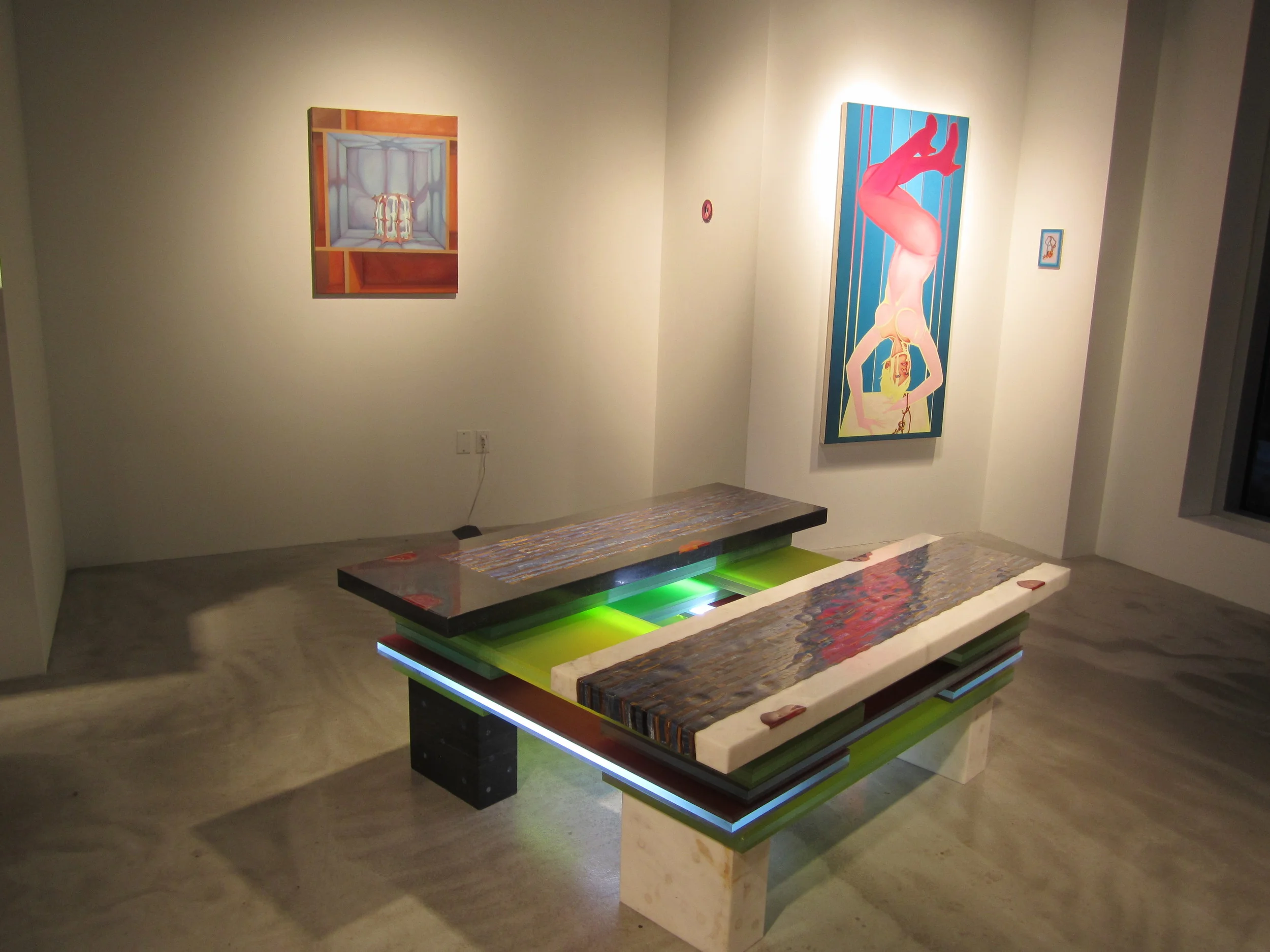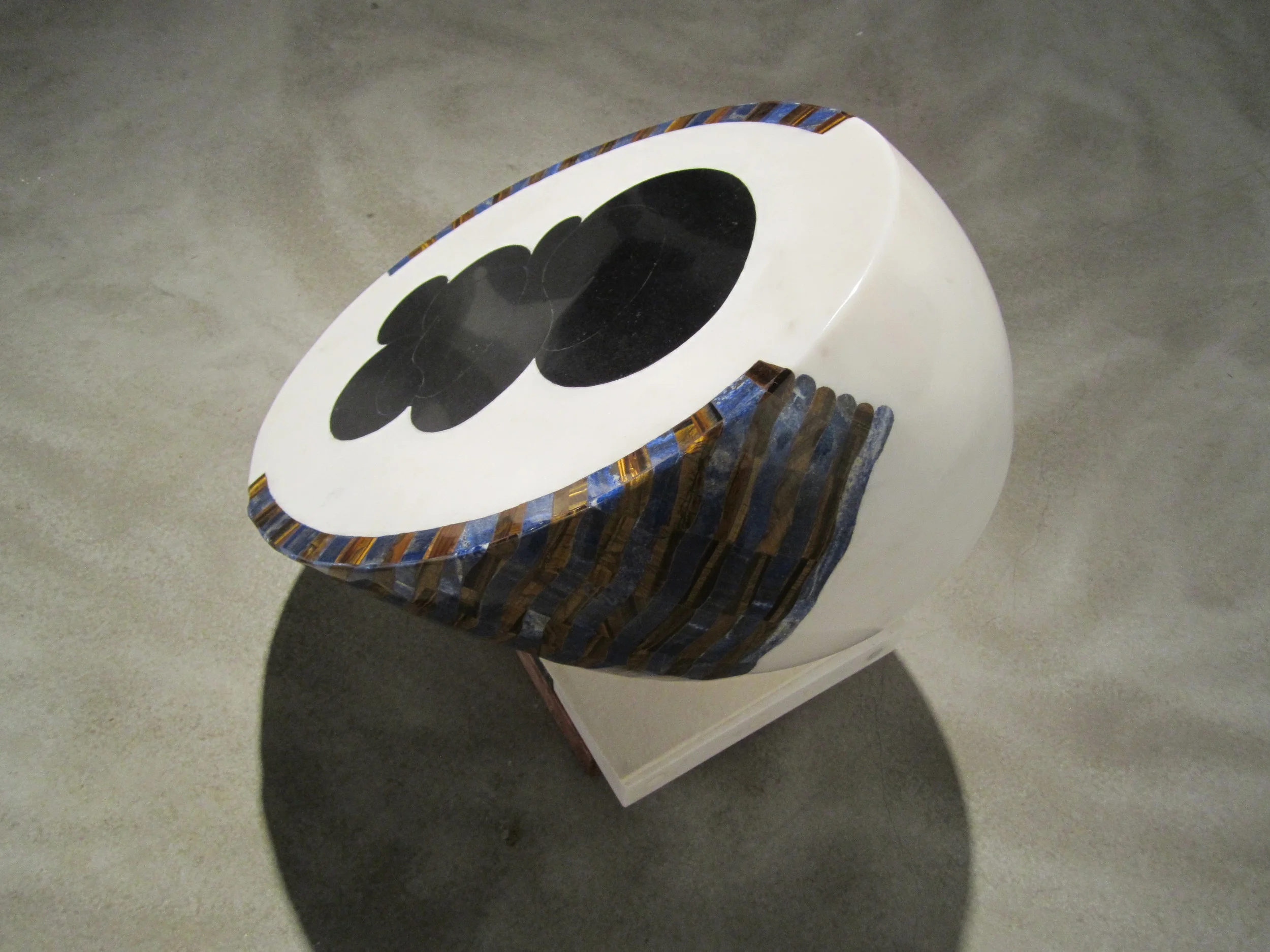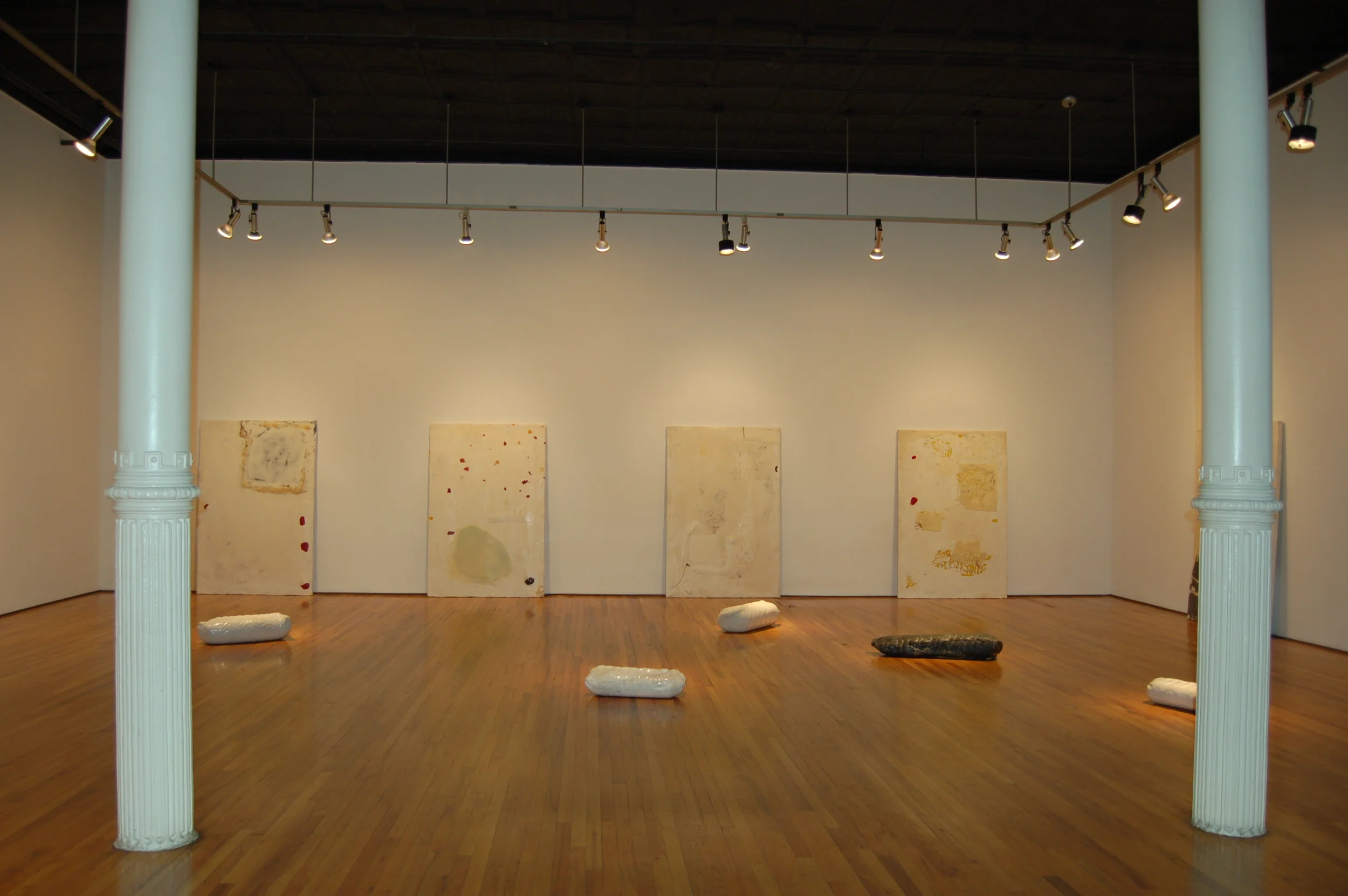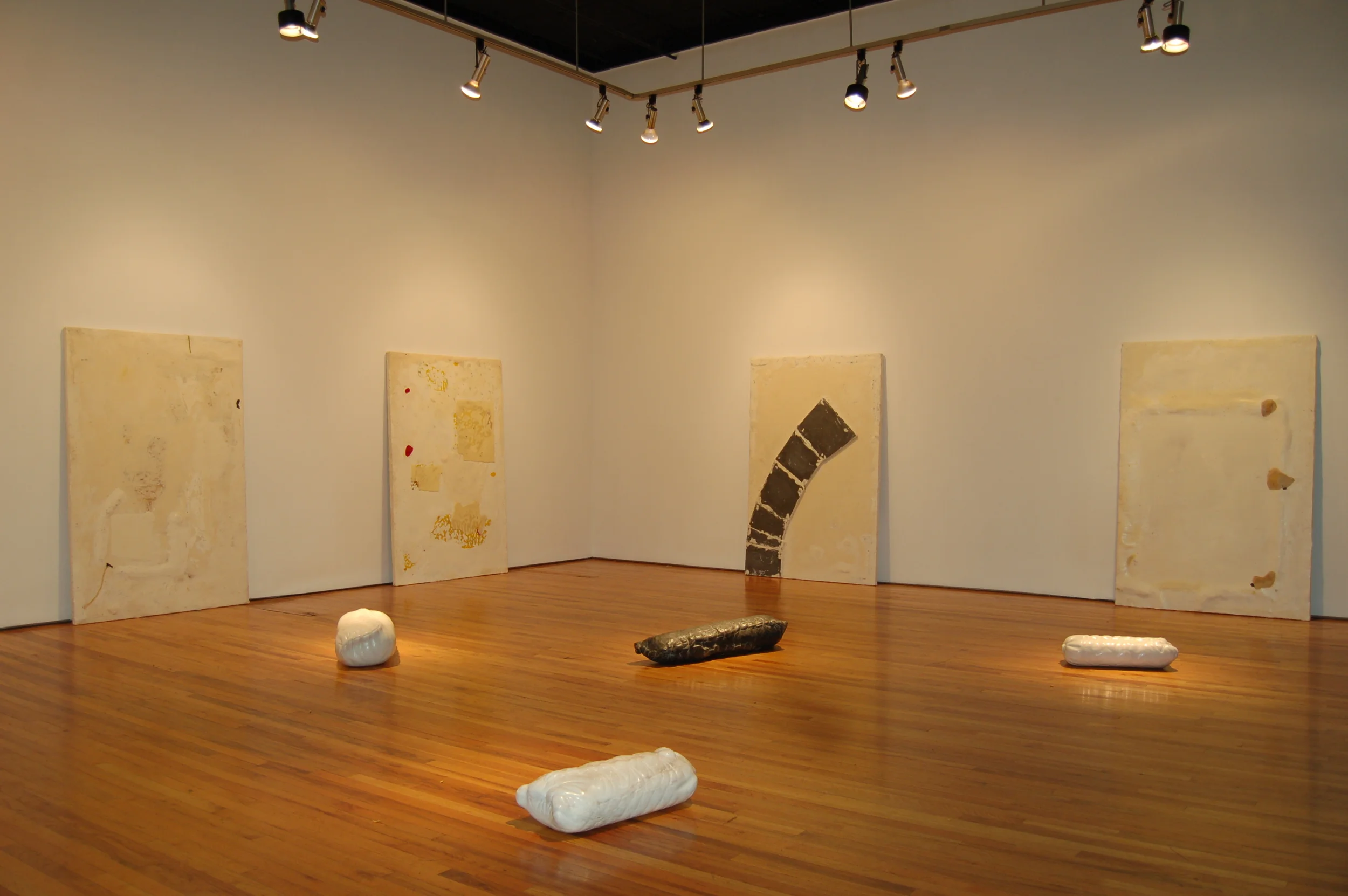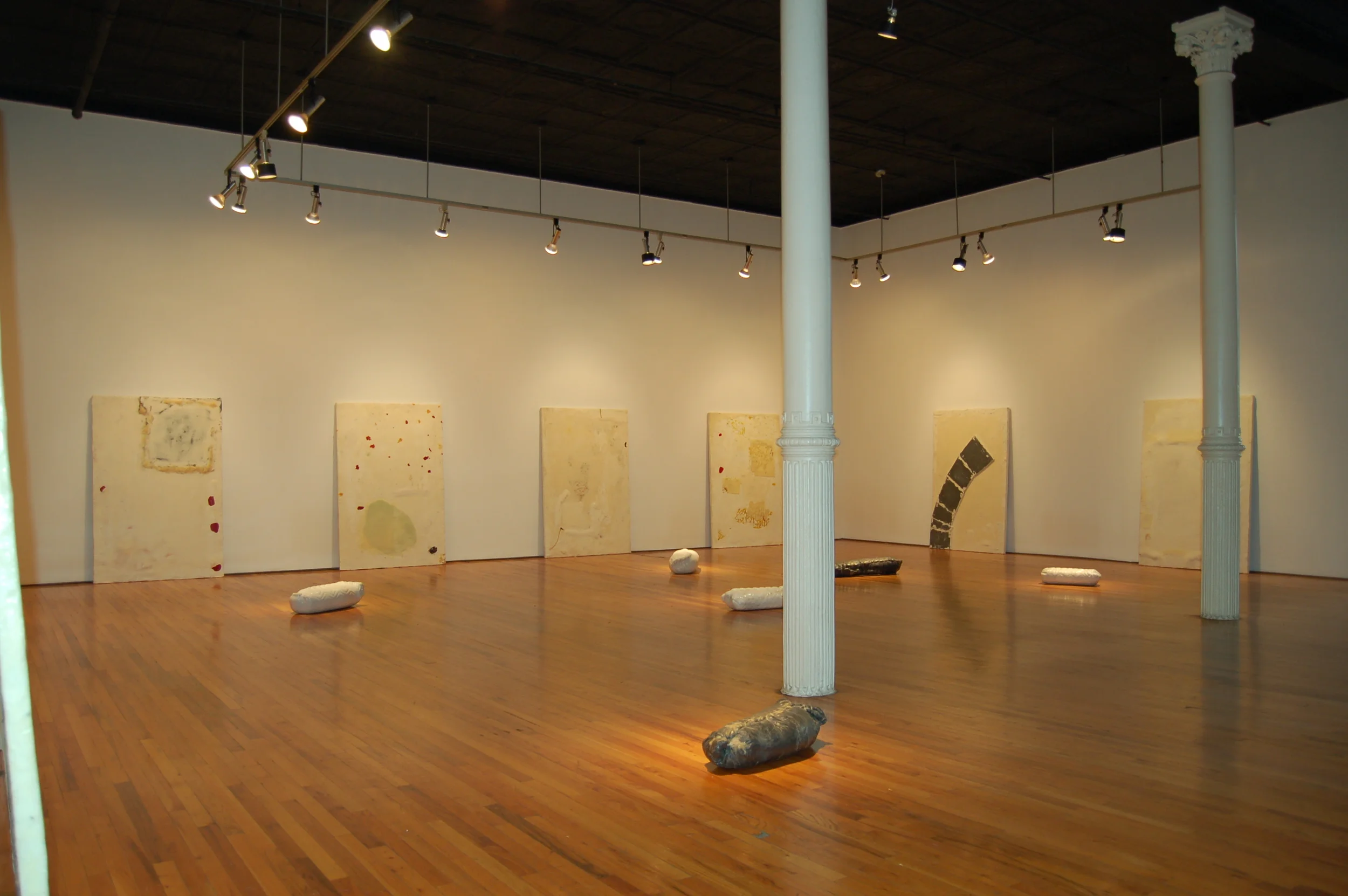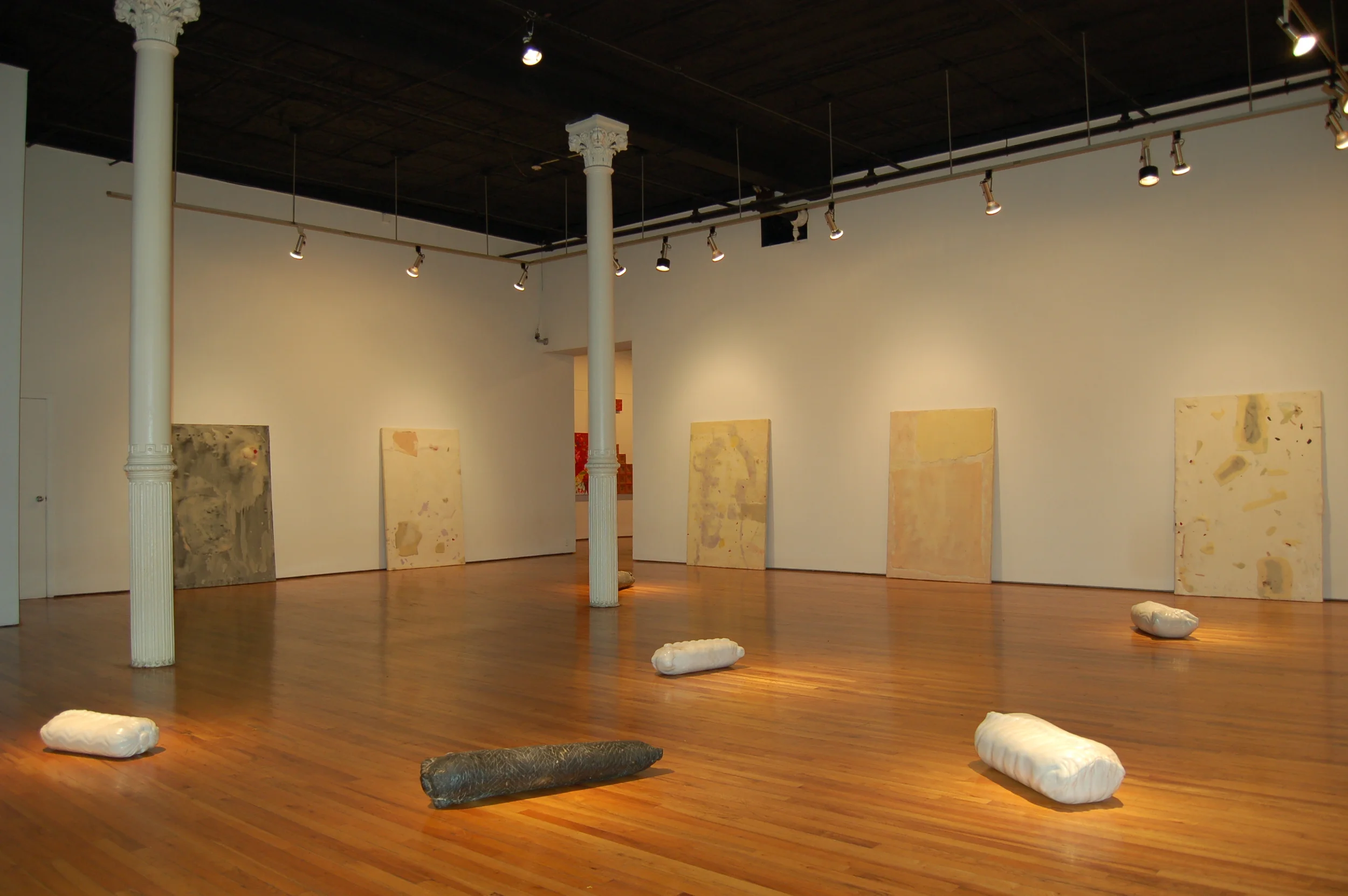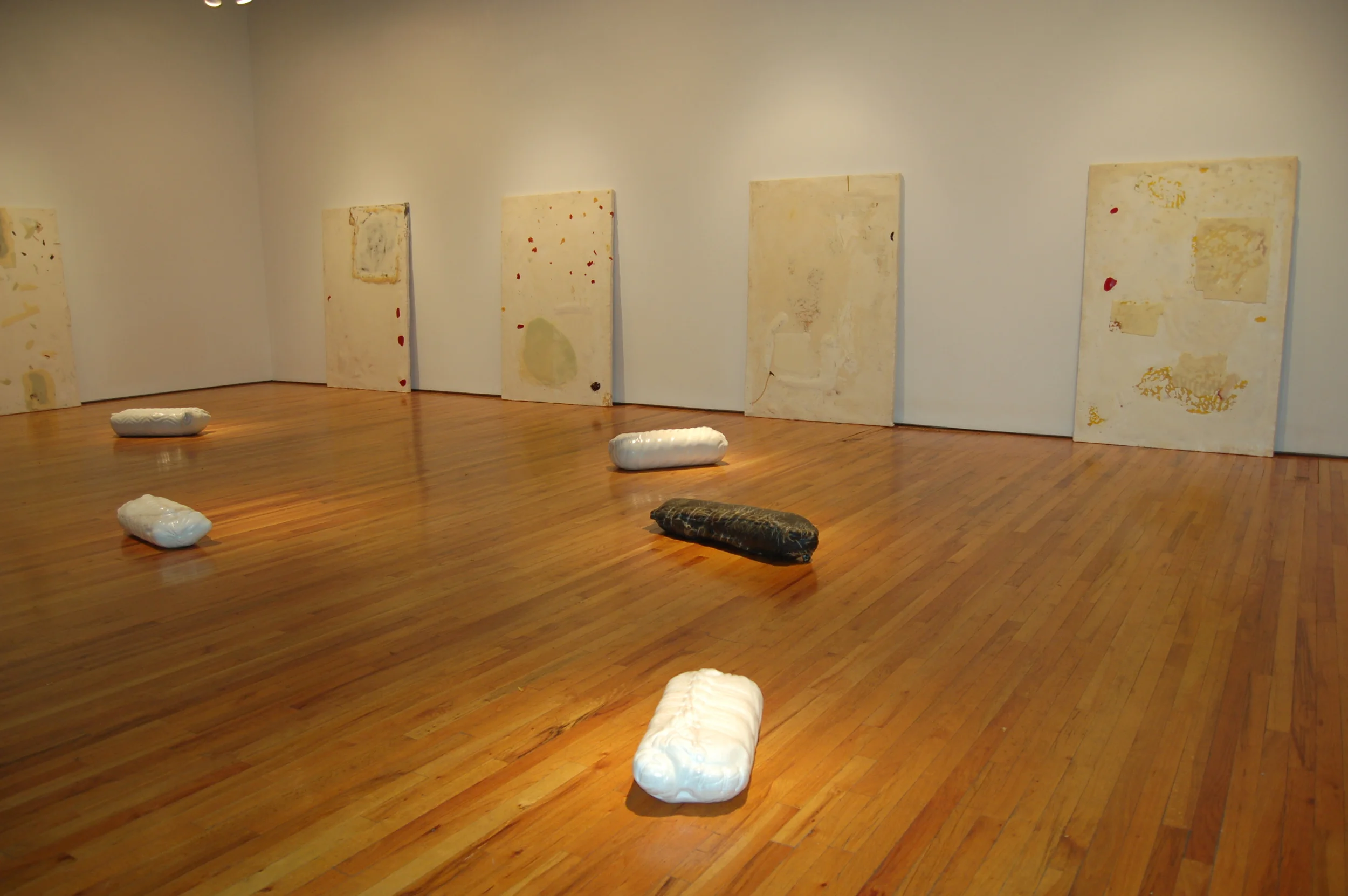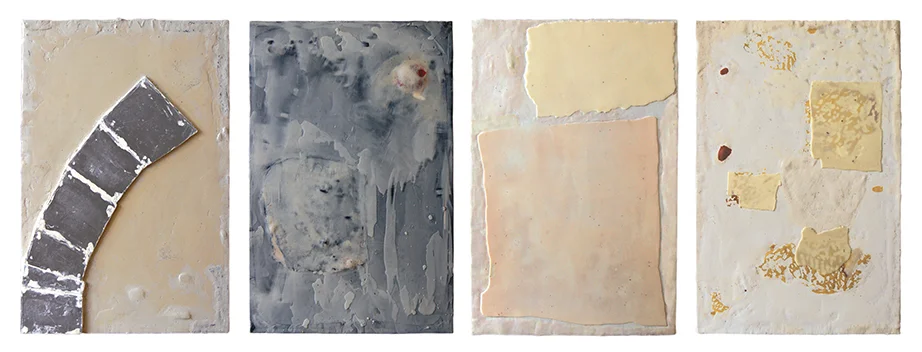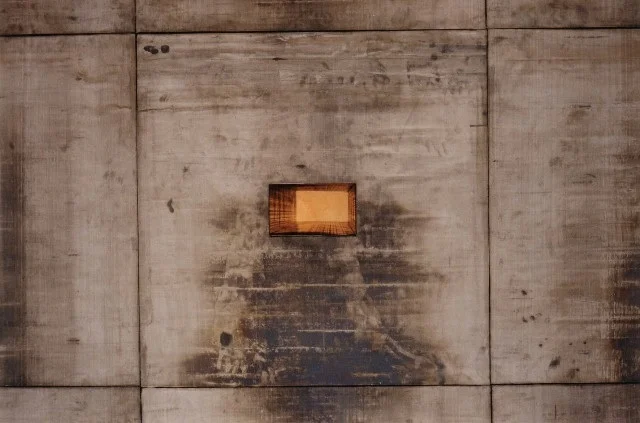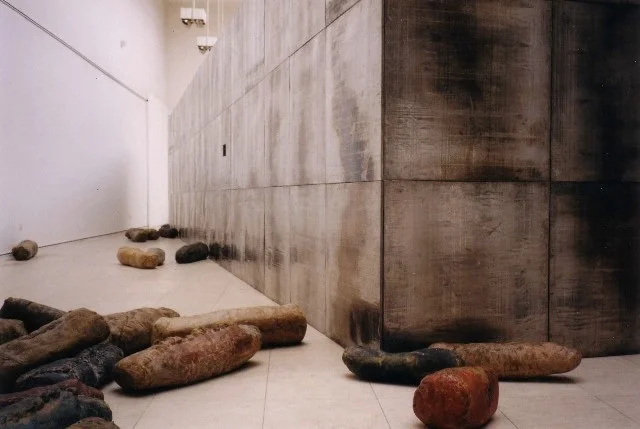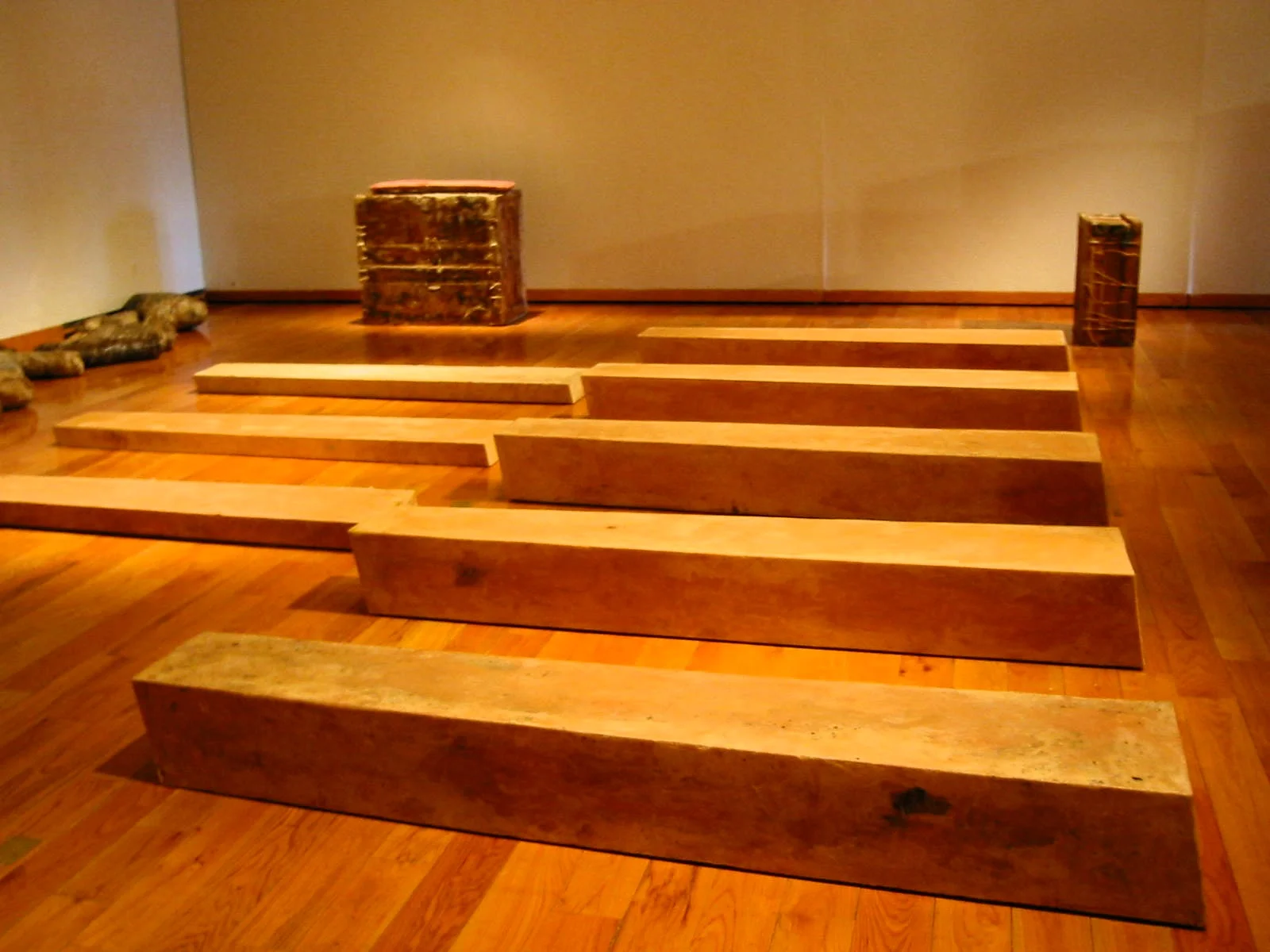Media: Organic beeswax, natural fibers, lead, wood, graphite, granite dust
Dimension: Monument - 1 600 x 800 x 300 cm. Offerings range in size from 13 x 48 x 15 cm to 32 x 120 x 35 cm.
Sound environment, entitled "Zonule Glaes II" by composer Dennis Bathory-Kitsz
Remains II - 1997
Essay by Joseph Karoly
In his two related series of works, "Hearts and Minds" and "Remains of the Past/Remains of the Future", Pavel Kraus states that the brain is the most erogenous "zone". As a reified, it is the virtual locus for erotic propositions. These propositions encompass the notions of arousal and perversity, seduction and abandonment. The heart provides a rich history of symbolic inscription, as the metaphorical organ of concupiscence for person or place, the seat of emotional and spiritual presence. The mind acts as a filter or ordering instrument for this raw, emotive plasma. The mind imposes a matrix for psychological resonance.
For Kraus, these resonance include the use of materials which hint, strongly at a corporeal awareness of the body both haptic and tactile, as well as a psychological ambiguity of temporal displacement the conjure, whiffs of nostalgia for memory that is both "pre" and "post" industrially apocalyptic. Certain aspects of Kraus' work hints at the libidinous "Prague-of-the-Mind", where sex and death form parenthetical poles which are all activity shuttles between. Kraus espouses an aesthetic of desire, both physical and spiritual. Desire is a verb, requiring a mental transaction between the one who longs and the object of that longing. The purest longing is in one's capacity to desire, not necessarily in its attainment. To solve the mystery of Kraus' objects would be to return them to the realm of mere things, to deconsecrate them, rob them of their associative powers. Like a pornographic image or text, the works are aimed at the individual viewer, couched in a private arrangement of exchange, designed for their eyes alone. This, of course, is a fictional exchange, since the means are open to all, only the interpretation seduces privately. In a decidedly "Sadeian" proposition, whatever pleasure the viewer derives from engagement with the works, Kraus' personal capacity for amusement is the final arbiter of determining the parameters between recognition and mystery, subservience and mastery.
Specific reference is dissolved in the range of possible meanings in favor of a Surrealist gambit of uncanny juxtapositions and visual non-sequiturs. This ambiguity places the work at a crossroads of aesthetic exchange. It begs an ironic reading between familiarity and our inability to locate them precisely in our catalog of symbolic referents and meanings. These objects refer, but attempts to use them as a type of shibboleth in an ordering system are thwarted. They are only metaphors used to describe other metaphors, sign posts with multiple arrows pointing in many directions, each path revealing a set of different possibilities. The works' power is in the lure of any mystery that tease and provokes, promising to reveal in direct proportion to one's commitment to seduction.

